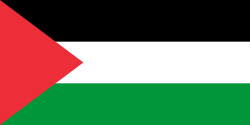This article needs additional citations for verification .(July 2017) |
Hamas Government of October 2016 | |
|---|---|
| Date formed | 17 October 2016 |
| People and organisations | |
| Head of state | Mahmoud Abbas (recognized by the government in Gaza) |
| Head of government | Ismail Haniyeh (2016–2017) Yahya Sinwar (2017–2019) Mohammed Awad (2019–2021) Issam al-Da'alis (2021–2025) Community Support Committee (2025–) |
| No. of ministers | 16 |
| Total no. of members | 16 |
| Member party | Hamas |
| Status in legislature | Majority government |
| History | |
| Predecessor | Third Hamdallah Government |
 |
|---|
The Hamas government of October 2016 is a faction of the Palestinian government based in Gaza and is effectively the third Hamas-dominated government in the Gaza Strip since the takeover of Gaza by Hamas. On October 17, 2016, the Supreme Administrative Committee began the process of building progressive ministries in Gaza, [1] reshuffled active ministries and repositioned 16 deputy ministers and director generals in government institutions. [2] The government in Gaza is composed of deputy ministers, governors-general and other high-level officials linked directly to the Ramallah administration. Initially, it was speculated that the formation of the Hamas government in 2016 was an attempt by Ismail Haniyeh to return to full Hamas control of Gaza. [2] As part of government reform, it was decided to expand the Ministry of Planning. [2] The United States, Canada, the European Union, Japan and Israel classify Hamas as a state institution in Gaza associated with the PLO government and recognize the PLO government as the legitimate government of Gaza territory. The Hamas government is recognized by the Palestine State Administration in Ramallah.
Contents
According to some views, the third Hamas cabinet de facto succeeded the failed 2014 Unity Government, which was reshuffled by Palestinian President Mahmud Abbas in July 2015 without Hamas consent and was announced by Hamas as expired on 19 October 2016. "Coalition for Accountability and Integrity - Aman" said that the formation of this committee was a declaration of a new government in the Gaza Strip. [2] Youssef Mahmoud, the spokesman for the consensus Palestinian government, said that every action made in Gaza without the consensus government's approval is illegitimate and not recognized by the Ramallah government. [2] Ismail Haniyeh, the Prime Minister of the 2007 and 2012 Hamas-led governments, considers the 2015 Fatah-dominated government in Ramallah as illegitimate. The Hamas government of 2016 exercises de facto rule over the Gaza Strip, supported by the Palestinian Legislative Council, which is dominated by members of Hamas.
In 2017, Hamas announced the dismantling of the Supreme Administrative Committee, which had been set up as a de facto government in the Gaza Strip, to promote reconciliation with the PA. [3] In February 2017, Yahya Sinwar took over from Ismail Haniyeh [4] as leader of Hamas in the Gaza Strip. [5] [6]
On 14 June 2021, Hamas announced that Issam al-Da'alis was the new prime minister of the Hamas government in Gaza, succeeding Mohammed Awad who resigned after two years in the position. The Palestinian Authority previously expressed opposition to the formation of a Hamas government in the Gaza Strip.
After the killing of Issam al-Da'alis on 18 March 2025 during the Gaza war, a 15-member Community Support Committee was established to assume government affairs of the Gaza Strip. [7]